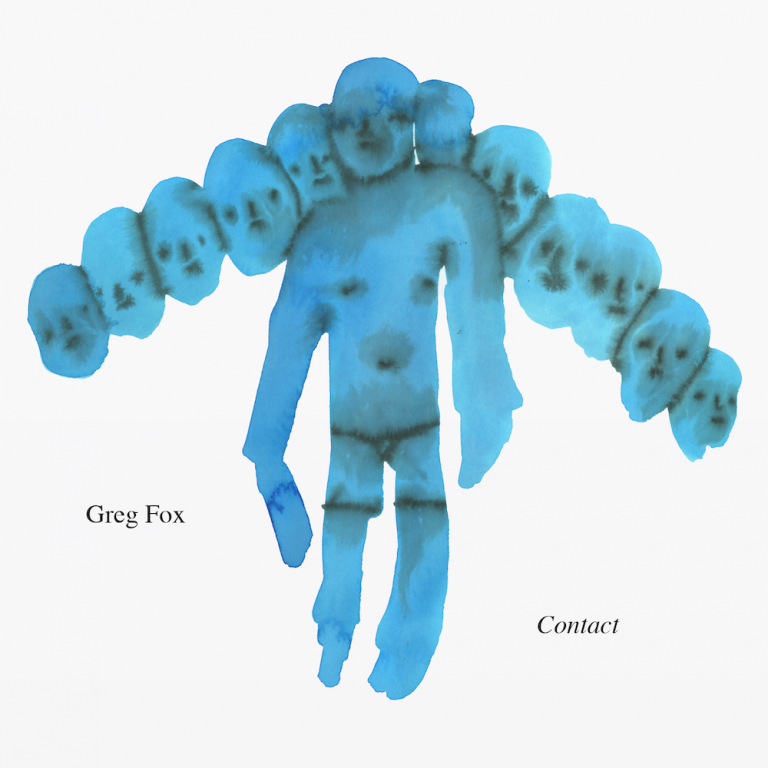Recently there seems to be a spate of drummers putting out electronic music; Deerhunter’s Moses Archuleta has been working for years as Moon Diagrams, Grizzly Bear’s Chris Bear just put out his first release as Fools, and Big Thief’s James Krivchenia will be releasing his debut solo album of productions later this month. Greg Fox is different. The stick-man-for-hire has no limits to his abilities; best known for his work with metal provocateurs Liturgy, he’s also heard on Owen Pallett’s latest orchestral voyage, but even in projects as diverse as these we don’t get a proper look at the mind behind the sticks.
Now he’s teamed up with producer Randall Dunn to re-enter his own world – and while there are electronics involved, percussion remains the beating heart of it. Contact’s title would have you believe it’s all about that moment when stick hits skin. But, through the album’s diverse and intricate textures, there are many more connections to be made from the word Contact; collaboration, ritual and, maybe even extra-terrestrial interaction.
Fox’s previous albums under his own name began his experimentation with Sensory Percussion; technology that reacts in real time to the way drums are played and offers extra dimensions and depths. That meant that his songs were often full-to-bursting with sounds and textures, including voices – but on Contact he’s moved away from that. Here Fox is more interested in using drums and percussion to draw a more spacious atmosphere around the central rhythms, leaving the listener to decipher the shapes that these sounds throw out.
Sure, opening track “Vedana” does sound a bit like Fox rummaging through a cupboard full of pots and pans for the first two minutes – albeit an epic one, possibly found in the kitchens of Valhalla – but the sound of these rattles and crashes are an ideal introduction to Contact. The way they echo off into the atmosphere, allowing you to envision their physical shape, gives us our first taste of the resonance and depth that Fox will be exploring through the record.
It’s even better displayed in following track “Arising and Passing”, which begins with a dextrous and tantalising drum roll that makes way for a splash of colour in the form of organ and chimes. Rather than make these the focal point of the song, they remain on the outskirts, and “Arising and Passing” seems like a psych-rock song turned inside out. At the centre we have Fox at his towering best, rolling and crashing with breathtaking fluidity, while the more melodic elements flit around like fireflies to his flame. The balance between these sounds is what makes it such a three-dimensional listen, as the percussion never overwhelms; despite building up torrential speed and power, this force is made beautiful by the spare-but-carefully-adorned melodic elements.
Named after the feeling of sudden tingling or burning in the hands, “Parasthesia” seems to depict these surprise sensations through its masterful use of sonic dynamics and depth. Percussion remains at the core, but this time it’s a percussive string instrument, the hammered dulcimer, which sounds like it’s sending off sparks every time it’s hit, like sudden spasms through nerves. Ominous thuds give the track a rigid spine, while hissing atmospherics fill the surroundings to give “Parasthesia” a supernatural sheen, as if we’ve stumbled across a clearing in a forest where unknown beings have just landed – and we’re about to make Contact with these peaceful-seeming aliens.
Fox makes more overt use of melodic elements as we reach the final stages of Contact. “Ill Being” utilises Sensory Percussion most clearly, as Fox takes up a steady beat that is coated in drizzles of splashy and buzzing electronics. “From The Cessation of What” is the album’s longest track at over eight minutes, and Fox uses the time to show off the array of ideas he’s accumulated in the creation of Contact. Rustling atmospherics lead into his powerful-yet-restrained drumming, which is then combined with a dazzling music-box twinkle – suggesting a jack in the box might spring out at any moment. Then, indeed, Fox does muscle his way into the spotlight, and just jams out on his kit for the song’s final minutes, bright synths flying off at dashing angles dictated by his sticks.
The only moments on Contact that don’t open up a world of sensory exploration are the three title-track-come-interludes; “Contact (sukha & somanassa)”, “Contact (dukkha & domanassa)”, and the closing “Contact (upekkhā)”. These three songs find Fox at his kit, just playing with no adornment – and while they’re still impressively dextrous and lithe performances, they do feel a bit like filler. Perhaps Fox felt that he needed to remind us that, beneath all the dulcimers, synths, electronics, and atmospherics found across Contact, he’s still a drummer at his core.

